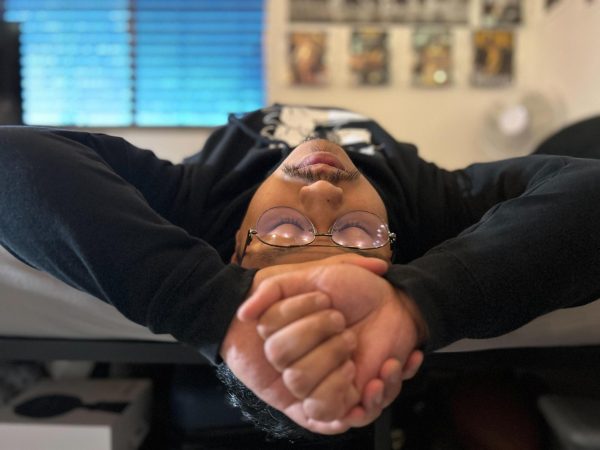Consumption, COVID, and Covering Up … Cute!
“You would look prettier if you covered your smile more.”
Picture this: you’re sitting in on a park bench ready for your first date. It seemed like a good day to come outside for a breath of fresh air and you made sure to put on the most expensive mask you have — it was custom-made. You hear someone call your name and you turn excitedly. Suddenly, you’re hit with a moment of shock. You met them through a dating app, of course, and while you had seen their face through your screen and from the comfort of your home, you didn’t expect to see it out in the open. They smile wide and you glance around awkwardly. They sit down next to you and you feel almost a little uncomfortable seeing their face up close while out in public. Although a vaccine had come out years ago, it feels strange to see someone leave themselves so vulnerable to both the outside world and the judgment of others.
Alright, the future might not be as insane as this. However, if you think that once a vaccine is created to combat COVID-19 society will return back to “normal,” you could be sorely mistaken. Now, before you go and fill your mind with more thoughts of a newly established dystopian society where close contact with others is frowned upon and most businesses turn to delivery services, I would like to turn your attention to your closet. Considering the face mask shortages that have occurred thanks to the outbreak, it’s no wonder that people have been grabbing whatever they could to cover up their faces. From scarves to tied shirts to old sewed up bras, those who don’t already own packs of surgical masks are finding ways to scavenge protective gear from what they already have. It may sound crazy to think that having to cover your face would be part of the new beauty standard, but taking into account how our society’s current state and the history of our previous worldwide beauty standards, it’s not that hard to believe.
In fact, beauty standards based on pandemics could be traced back to the 17th and 18th centuries. Smithsonian Magazine states that people during the Victoria era “romanticized [tuberculosis] and the effects it caused in the gradual build to death” and that even after “scientists gained a greater understanding of the disease and how it was spread, the disease continued to keep its hold on fashion.” If the thought of finding coughed up blood attractive seems strange, one could look to the descriptions used to describe patients diagnosed with the disease. A small waist, pale skin, “silky hair … sparkling or dilated eyes, rosy cheeks, and red lips” are descriptors usually reserved for fashion models. However, these are actually more like the words used to detail the strange, fragile beauty of people suffering from “weight loss … a lack of appetite” and “frequent low-grade fever.”
Shifting back to the present, we might not be able to see changes in wanting to physically mimic what severe cases look like, we can definitely already see changes in how we’re dressing when we leave the house. Today, more and more people have begun posting selfies with the masks they’ve made and tutorials on how to make your own all over social media. These masks come in all shapes and colors from gas masks with painted cartridges to bejeweled face masks with designer brands on the front, protective equipment once simply used for a sense of security when you walk outside has changed into another means of showing off how you look better than the average surgical mask toting citizen.
So, while you’re under quarantine, why not try putting your own creative touch to the face mask you use? If you want to keep up with the times and our ever-changing beauty standards, you can find plenty of guides on how to make your very own fashionable and functional face mask.







